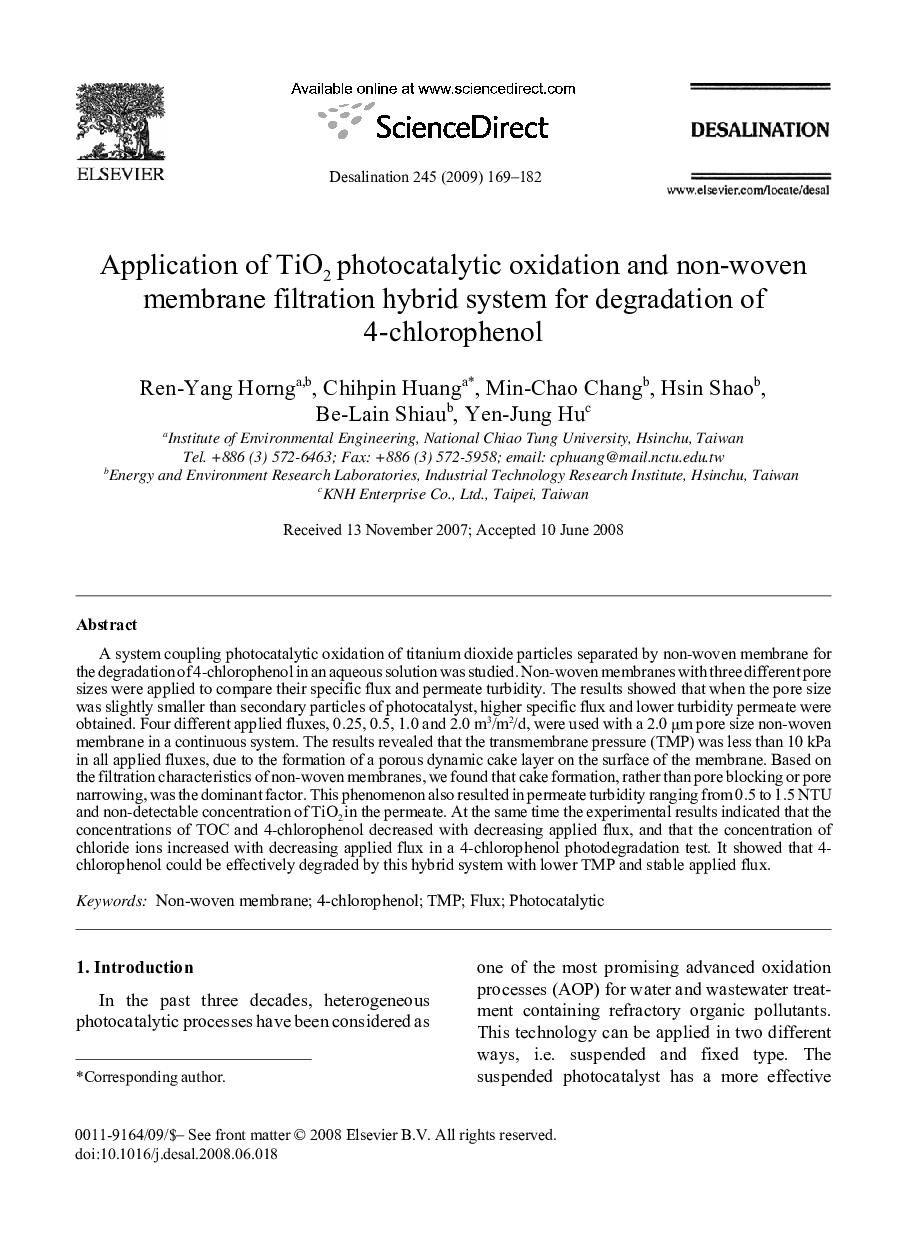| Article ID | Journal | Published Year | Pages | File Type |
|---|---|---|---|---|
| 626269 | Desalination | 2009 | 14 Pages |
Abstract
A system coupling photocatalytic oxidation of titanium dioxide particles separated by non-woven membrane for the degradation of 4-chlorophenol in an aqueous solution was studied. Non-woven membranes with three different pore sizes were applied to compare their specific flux and permeate turbidity. The results showed that when the pore size was slightly smaller than secondary particles of photocatalyst, higher specific flux and lower turbidity permeate were obtained. Four different applied fluxes, 0.25, 0.5, 1.0 and 2.0 m3/m2/d, were used with a 2.0 μm pore size non-woven membrane in a continuous system. The results revealed that the transmembrane pressure (TMP) was less than 10 kPa in all applied fluxes, due to the formation of a porous dynamic cake layer on the surface of the membrane. Based on the filtration characteristics of non-woven membranes, we found that cake formation, rather than pore blocking or pore narrowing, was the dominant factor. This phenomenon also resulted in permeate turbidity ranging from 0.5 to 1.5 NTU and non-detectable concentration of TiO2 in the permeate. At the same time the experimental results indicated that the concentrations of TOC and 4-chlorophenol decreased with decreasing applied flux, and that the concentration of chloride ions increased with decreasing applied flux in a 4-chlorophenol photodegradation test. It showed that 4-chlorophenol could be effectively degraded by this hybrid system with lower TMP and stable applied flux.
Keywords
Related Topics
Physical Sciences and Engineering
Chemical Engineering
Filtration and Separation
Authors
Ren-Yang Horng, Chihpin Huang, Min-Chao Chang, Hsin Shao, Be-Lain Shiau, Yen-Jung Hu,
